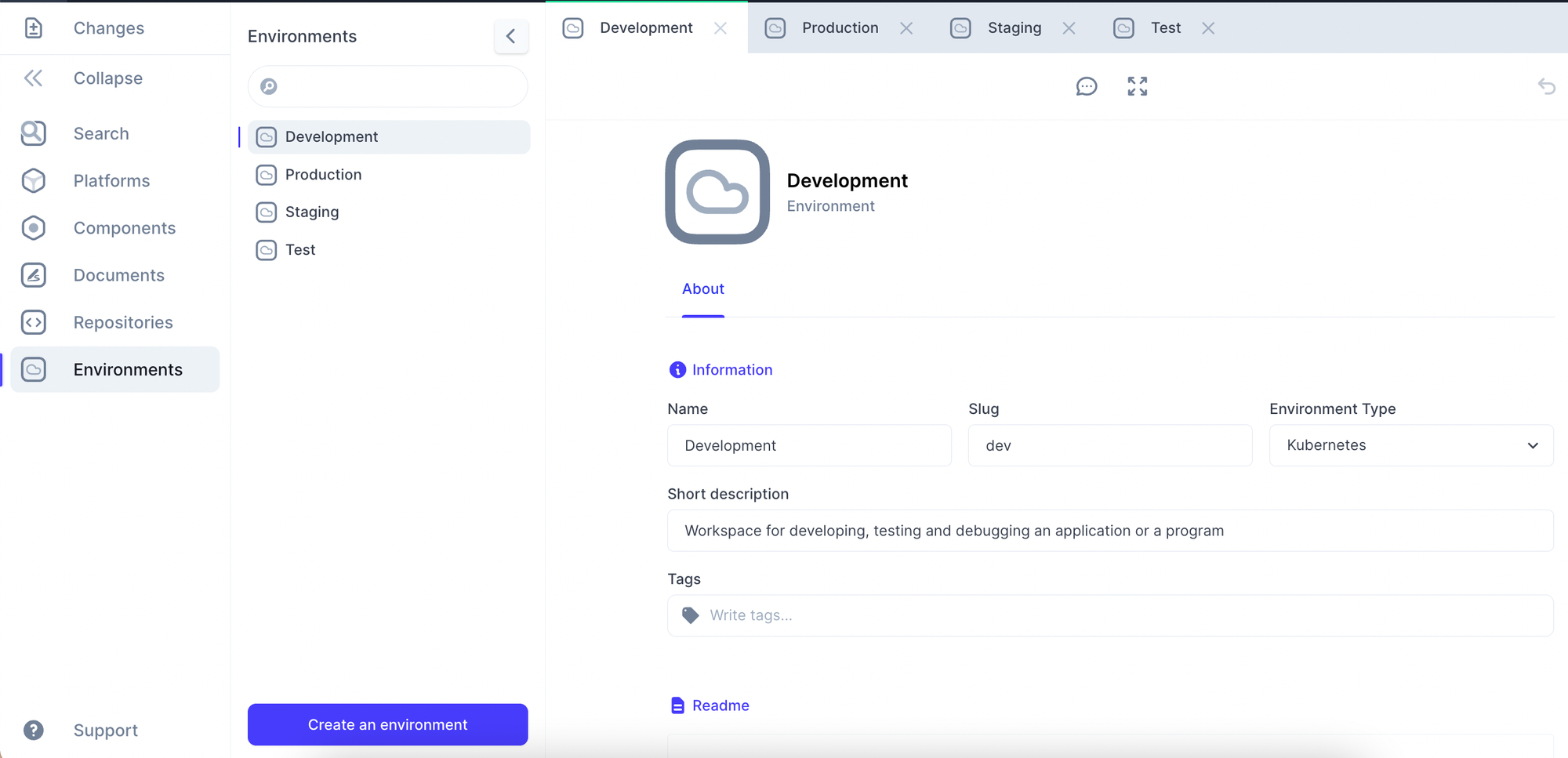Multiplayer Environments: Organize and Manage All Your System Information with Ease
Multiplayer Environments helps you organize and track your development environments. Streamline system information management and improve productivity by centralizing all of your system data in one place.

Multiplayer unifies all your system software information in one platform, eliminating the need to jump between static diagrams, scattered docs, repos, or Slack threads. This single source of truth saves time and significantly boosts developer productivity.
A key piece of system design is understanding your development environments and knowing which to use when developing new software, patching, refactoring, or testing.
Now, with Multiplayer, you can seamlessly organize and track all your environments—from Kubernetes to EC2 or Docker—across Development to Production, all in one place.
Environments in Software Development
Testing software in dedicated environments ensures code stability and functionality before deployment to production. Here’s a detailed overview of common environments in the software development lifecycle:
- 🧑💻 Development Environment: The workspace where developers design, code, and debug the application. It’s isolated from other environments to avoid affecting live services or tests.
- 🧪 Testing Environment: A controlled setting used to verify new features, bug fixes, and system stability. This environment often mirrors production but remains inaccessible to users. There are several specialized testing environments, including:
- Performance Testing: Measures how the system behaves under heavy load.
- System Integration Testing (SIT): Verifies interactions between integrated components.
- User Acceptance Testing (UAT): Ensures the system meets business requirements through user validation.
- Security Testing: Identifies vulnerabilities to protect against potential threats.
- Chaos Testing: Tests the system’s resilience by intentionally causing failures.
- Alpha/Beta Testing: Alpha is internal testing, while beta is tested by external users before release.
- 📋 Quality Assurance (QA) Environment: A specialized testing space where the QA team thoroughly checks for performance issues, bugs, and adherence to quality standards. It plays a critical role before moving the software to staging.
- 🔍 Staging Environment: A pre-production replica of the live environment used for final checks. This environment tests every aspect of the application to ensure it’s ready for production deployment without disrupting users.
- 🚀 Production Environment: The final, live environment where users interact with the application. This is where the software is fully operational, and all features are accessible to end users.
Environments in Multiplayer
Setting up Environments in Multiplayer is simple and intuitive:
Create an Environment
- Open your project
- In the left-side menu, open “Environments”
- Click “Create an environment”
- Type the environment name
- Click “Create a new environment”
Each environment can display critical details like:
- Name
- Slug
- Type (select between Kubernetes, EC2, or Docker in the drop down menu)
- Short description
- Tags
- Readme
This helps ensure your development, testing, and production environments are organized and well-documented.

Auto-Documented Environments
By setting up your environments in Multiplayer, you unlock the full potential of our System Auto-Documentation (Radar) feature.
Radar automatically discovers, tracks, and detects drift in your system architecture using OpenTelemetry.
Simply add a few lines of code to your services, and Radar will auto-document your system—comparing components, environments, dependencies, and APIs in your Multiplayer project with your real-world system, highlighting missing information and discrepancies.
What’s Next
With the successful release of our System Auto-Documentation (Radar) feature it became clear just how much developers value automated solutions that cut down on manual work.
This realization also highlighted a major pain point many teams face: the inefficiency of gathering the right information to effectively debug complex platform issues. That’s why our next focus is:
- Platform Debugger: A tool that lets you share deep session replays that include relevant data from frontend screens to deep platform traces, metrics and log. It helps your team pinpoint and resolve bugs faster by providing a complete picture of whats happening in your backend system architecture. No more wasted hours combing through APM data; the Multiplayer Platform Debugger gives you only the precise information you need to find and fix bugs quickly.
- Flow Diagrams: Visualize sequence diagrams with detailed dependency information at the component and API level for an easy understanding of low-level relationships.
If this is something that interests you, shoot us an email or let us know on Discord! 💜
You can try Multiplayer now, explore its features, and let us know how we can improve it to better serve your needs.
